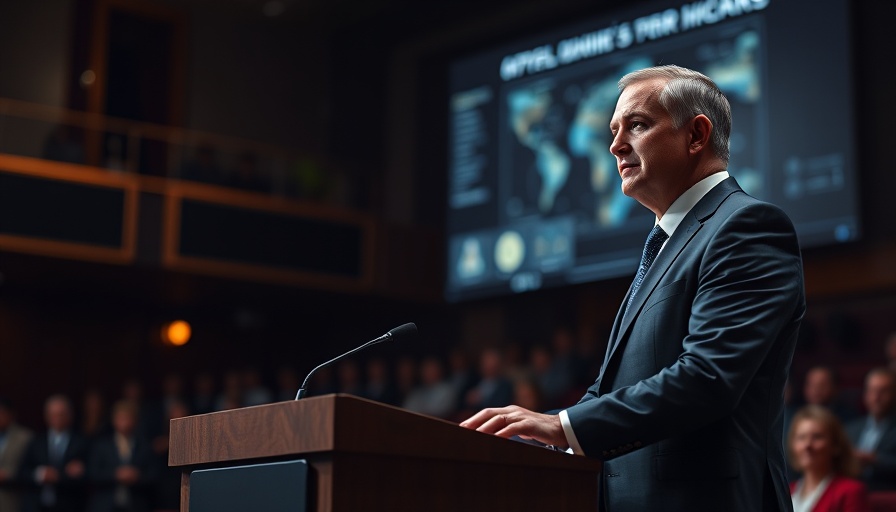
The Intersection of AI and Biotechnology: A Revolutionary Discovery
In a striking convergence of artificial intelligence and biotechnology, Nobel laureate David Baker is reshaping the landscape of protein design. His pioneering work on translating AI-generated hallucinations into practical, newly synthesized proteins is not just an academic breakthrough; it's a beacon of hope for future medical advancements.
Understanding AI’s Revolutionary Role in Protein Design
The crux of Baker’s research lies in utilizing AI to generate entirely new protein structures, leveraging what is often described as 'hallucinations' within AI models. This concept isn't merely theoretical; it draws parallels to Google DeepDream, which manipulates images to reveal imaginative interpretations. Similarly, Baker’s AI model processes random amino acid sequences, producing protein structures previously unseen in nature.
The journey from virtual concept to tangible reality is propelled by advanced AI techniques. Initially, experiments in 2021 triumphantly demonstrated that AI could lead to the manufacture of 129 unique proteins by translating data into usable DNA strands. More recently, Baker advanced this technology with a diffusion model akin to the AI behind creative engines like DALL-E. This innovative approach enables faster and more successful protein designs, underlining the practical utility of AI hallucinations in scientific inquiry.
Unprecedented Results: Transforming Healthcare
The quantifiable success of Baker’s work is astonishing: over 10 million new proteins have been conceptualized using this methodology, resulting in nearly 100 patents and the establishment of more than 20 biotech companies aimed at medical innovation. This significant output emphasizes not just experimentation, but a robust pathway toward real-world applications that could revolutionize treatment options for diseases like cancer and viral infections.
Historical Context: Protein Design Breakthroughs
Baker's accolades coincide with a broader wave of discovery in protein sciences. This year's Nobel Prize in Chemistry celebrated Baker for his computational design method and acknowledged Google DeepMind’s Demis Hassabis and John Jumper for their AI work on predicting protein structures. The intersection of these advancements suggests a future where novel proteins not only enhance our understanding of life’s fundamental processes but also create new avenues for therapeutic interventions.
Social Implications: Why This Matters
The capabilities emerging from this research touch every person on the planet. Proteins are the backbone of life, functioning as antibodies, enzymes, and hormones. Moreover, Baker's methods can aid in addressing dire global challenges, such as antibiotic resistance and the creation of bioengineering solutions to environmental issues.
Future Predictions: What Lies Ahead
As Baker continues to refine this groundbreaking technology, the implications for future medical care are boundless. The rise of AI in protein design may soon lead to custom-tailored proteins for individual patients, enhancing personalized medicine. The potential to generate proteins that fight specific pathogens or bolster immune responses could radically alter healthcare.
Actionable Insights: What Can You Do?
For AI enthusiasts eager to explore this rewarding domain, staying informed on the latest research in computational biology and AI applications is vital. Engaging with communities that intersect AI and biotech can foster collaboration and innovation in this nascent field. Those interested might consider diving deeper into proteomics or participating in forums discussing the ethical implications of AI in healthcare.
 Add Row
Add Row  Add
Add 




 Add Row
Add Row  Add
Add 

Write A Comment